Excerpts from Jim Conrad's
Naturalist Newsletter
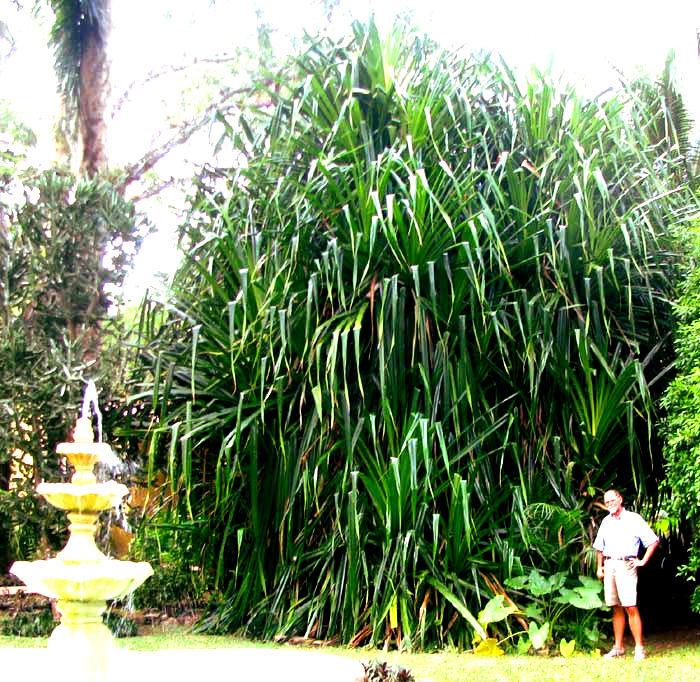
from the February 19, 2012 Newsletter issued from Hacienda Chichen Resort beside Chichén Itzá Ruins; limestone bedrock; elevation ~39m (~128ft), N20.675°, W88.569°; central Yucatán state, MÉXICO
PANDANUS!
Ever since I arrived at the Hacienda two and a half years ago one very conspicuous plant next to the fountain has eluded my attempts at identification. It was like a 25-ft-tall, much branching lily (7.5m), but it never flowered or fruited. I'm standing next to it above.
Inside the plant it's open enough to see that leg- thick stems bearing big leafscars sprout long, semi-stiff blades from their crowns, as shown below:
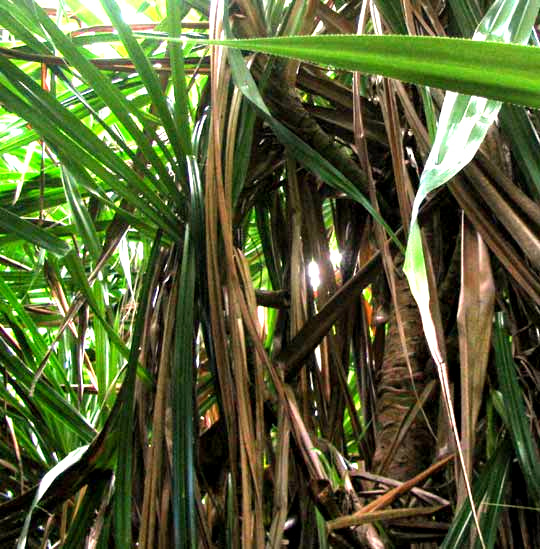
I suffered a little getting that last shot because the plant's leaf margins bear tiny, very sharp, outward- pointing teeth that get you as you reach in, as seen below:
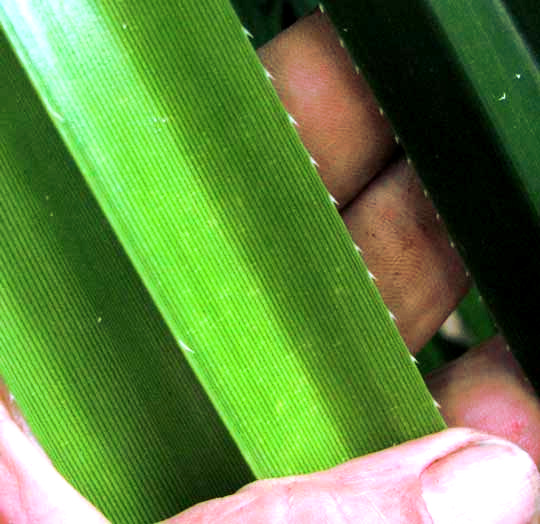
In that picture a blade's darker upper surface is shown at the right, another blade's paler lower surface at the left.
So, what do we have here? I've seen it growing in courtyards and along the big Paseo de Montejo en Mérida, as well as along a beach road near gringo homes on the Caribbean coast. None of those plantings, however, were nearly as large as the Hacienda's. People seem to think that the plant should have all its leaves arising from the ground, and that when a leafless stem starts forming it's "getting leggy" and should be cut back. But, obviously, trunkless ones are just getting started.
This week I visited our plant in one more attempt at IDing it, hoping to see something overlooked before. And I did see something new, though maybe before I'd just overlooked it. The new discovery is shown below:
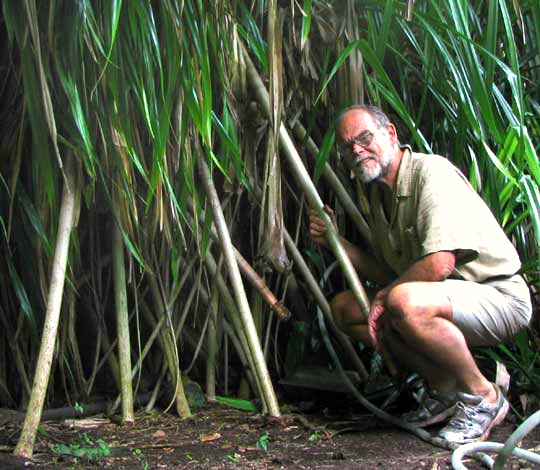
Those are 2½-inch-thick (6.4cm) prop, or stilt, roots. You can see the peculiar spines on them below:
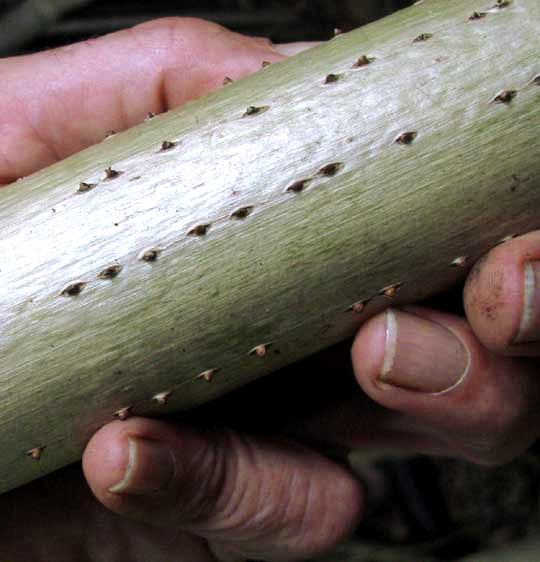
Seeing them, instantly a name popped into mind, and I still don't know how the name got there, but it turned out right. The name is PANDANUS. Pandanuses tend to look like clustered palms with stout prop roots just like these. Pandanuses are sometimes called Screw-Pines, though they have nothing to do with pines (or palms). They belong to the Screw-Pine Family, the Pandanaceae, and occur mostly in tropical Asia, Australia and the Pacific islands. Plants are either male or female; fruits are heavy and pineapple-like.
About 600 Pandanus species are recognized. Based on pictures on the Internet and the fact that it's commonly grown, I'm guessing that maybe we have Pandanus veitchii from Polynesia. Up North that species is best known as a variegated form grown in pots. But those are just babies; ours shows the plant's real potential.